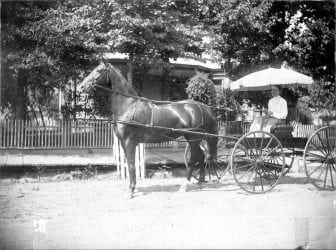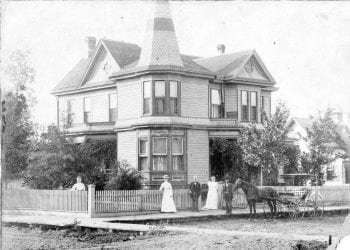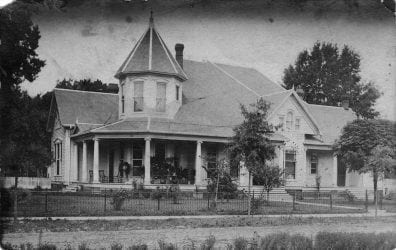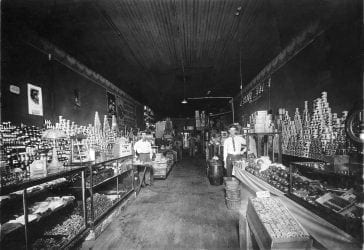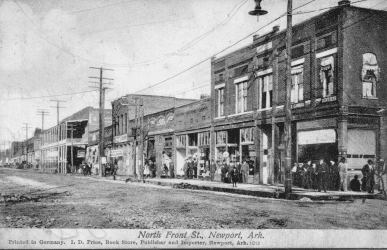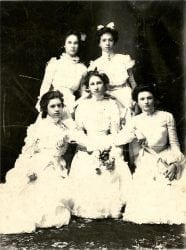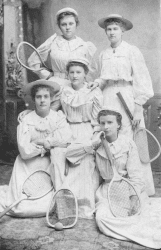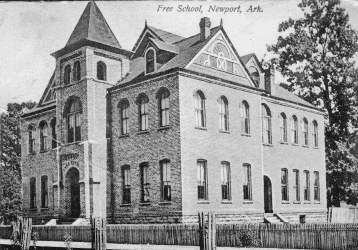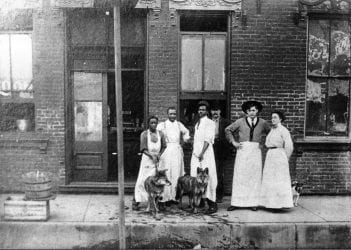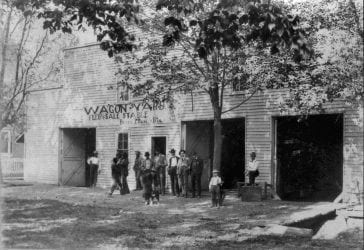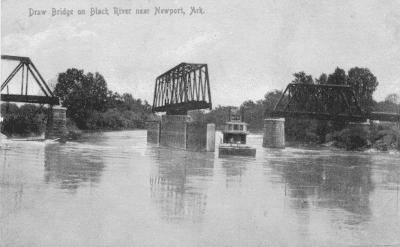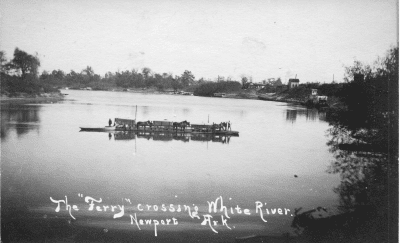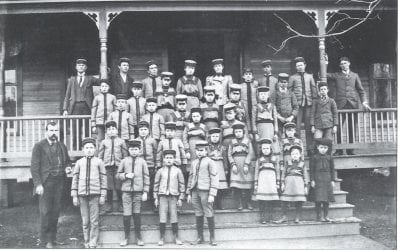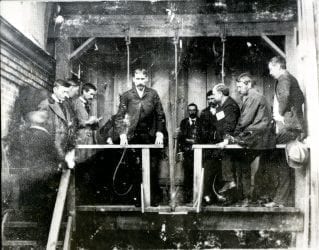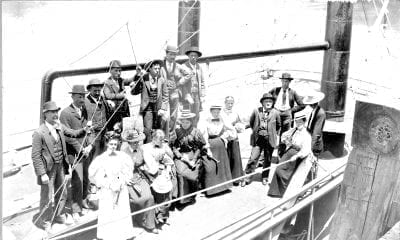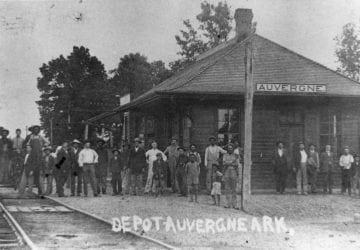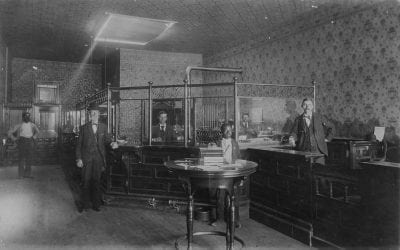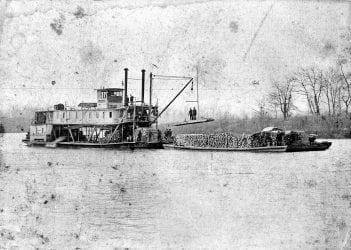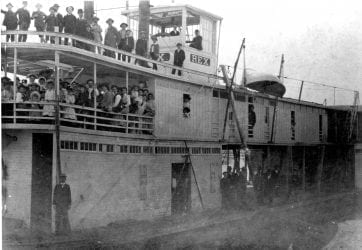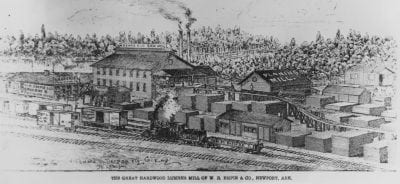Photo Search
To browse our photo archives, please scroll through the pages using your mouse.
To search our photo archives, please enter a keyword or phrase into the search box.
To search photos by decade, please use the dates on the side bar.
To view a larger image and see the complete text of the caption, please click on the photo.
1900’s – Lula Empie Van Dyke
Lula Empie Van Dyke is pictured here seated in the family buggy. The carriage horse, Nellie, is harnessed. This is a typical scene in Newport before the automobile age. Many ladies had their own light buggies as well as a family surrey. They were good horsewomen...
1900’s – Empie and Van Dyke Home
W.B. Empie built a fine Queen Anne home at the corner of Fourth and Laurel Streets that later became known as the Van Dyke House when Empie's daughter Lula married Percy Van Dyke. Members of the Van Dyke family lived in the home for over 80 years. Pictured here are,...
1900’s – T.D. Snetzer’s Home
This is thought to be T.D. Snetzer's home, and it is typical of the Victorian architecture that was common in this period throughout Newport and the South. Note the Ionic columns, the octagonal tower, and the large porch. From Watson, Tim, and Elizabeth Jacoway....
1900’s – Snetzer’s Grocery
Snetzer's Grocery Store in Newport was one of the finest in town, providing all manner of "fancy groceries" as well as the usual stock. Bert Snetzer's store on Front Street was a constant in Newport's economy for 51 years. Bert is on the left in this photograph, and...
1907 – West End of Front Street
This postcard was printed in Germany and sold in I.D. Price's bookstore on Newport's Front Street in 1907. It features a view of the west end of Front Street, facing the railroad and the river. The city fathers were already using mussel shells, abundant in the...
1907 – East Front Street in Newport
The signature white ink on this photography shows that it was taken by local photographer Parker. It features the east end of Front Street in 1907. Two establishments in the same block offer hot meals for 20 cents. From Watson, Tim, and Elizabeth Jacoway. Newport...
1901 – First Graduating Class of Newport High School
The first class graduated from Newport High School in 1901. The commencement was held in the elegant and ornate Newport Opera House at Second and Laurel Streets. The five graduates are, from left to right, (first row) Mary Whittaker, Lula Wolff (later Stephens), and...
1900’s – Newport Tennis Club
The tennis club was a favorite diversion for some of the young ladies of Newport. Pictured here are, from left to right, (first row) Lucy Watson and Lottie Dill; (second row) Elizabeth "Lib" Brandenburg; (third row) Narcissa "Narcie" Phillips and Ellen Watson. From...
1900’s – Newport Free School
Built in 1896 and torn down in 1911, the yellow-brick Newport Free School was located between Third and Fourth Streets on Walnut Street. It was open to all white children in Jackson County. The county did not offer public education to its African American residents...
1890’s – Best’s Restaurant and Saloon
Berry Best's brother and sister-in-law Ira and Jewel Best owned a popular restaurant and saloon at the corner of Walnut and Front Streets. The kitchen help is pictured here standing outside with Ira's domesticated wolves. The man in the dark hat in the middle may be...
1890’s – Best Livery Stable
Berry J. Best ran a thriving wagon yard and livery stable at the turn of the 20th Century. Here, he bought and sold horses, mules, built and repaired wagons, and sold feed for livestock, which were crucial to one of the major forms of transportation at the time....
1890’s – Black River Railroad Bridge
The railroad bridge over the Black River had a swinging section in order to let the tall steamboats pass through, as did most railroad bridges of this era. The St. Louis, Iron Mountain, and Southern Railway Company built a branch line at the little town of Diaz that...
1890’s – White River Ferry at Newport
In the days before a bridge crossed the White River, ferries were the only means of transporting mules and wagons, with their loads of goods and people, from one side to the other. This postcard with the signature white ink of photographer Parker, made its way to...
1898 – Newport Lake Frozen
In the 1898 ice storm, Newport Lake froze solid, and men and boys had a fine time challenging Mother Nature. The banks of Newport Lake had been the site of many Indian encampments before the coming of the white settlers. The lake was a source of both pleasure and...
1890’s – Doswell Institute
The Doswell Institute was a private school in Auvergne established in 1896 by Franklin Doswell, who was prominent in leading education efforts in Jackson County. Although the students paid tuition, the school was not successful and closed in 1906, perhaps because by...
1896 – All Day Dinner
The home of Mr. and Mrs. E.L. Watson at Second and Main Streets was the scene every year for many years of an All Day Dinner. According to family lore, on the day that Lavator McDonald died, his wife sent a note to the Watsons, saying "Lab's dead, but I'm comin'!" ...
1894 – Olyphant Train Robbers Hanging
The hanging of the Olyphant train robbers on the grounds of the new Jackson County Courthouse was one of the most exciting events in Newport in 1894. This photograph shows one of the robbers speaking his last words before being hooded and hanged. The local...
1895 – Boating Party
In what seems to have been a fairly typical afternoon outing, this boating party made an excursion up the White River in 1895. Lou Minor, the only one identified in this picture, is seated on the far right. One can only speculate about why some of the women are...
1890’s – Auvergne Depot
the Batesville and Brinkley depot at Auvergne was built in 1884 but blew away in the tornado of 1892. The tracks of the B&B which were laid from Brinkley north, reached Newport around 1890. Because of opposition from the Iron Mountain Railway, the B&B never...
1890’s – Safe Deposit Bank
In 1890, the Safe Deposit Bank, a private entity, was reorganized as the Bank of Newport to provide more banking services. Pictured here are E.L. Watson, founder and president (wearing the hat) and T.D. Kidman (cashier at the right); all others are unidentified. From...
1890’s – First National Bank
This building originated in 1896 as the Jackson County Savings Bank and later became the First National Bank. The Newport Club occupied the second floor, and an N is discernable in this photograph on the entrance to the left of the bank window. The bank stood at...
1890’s – Lumber Barge
This unidentified steamer pushing a lumber barge on the White River was photographed by W.D. Ross, who produced many of the photographs in Jackson County in the 1880's and 1890's. These boards have been milled and are ready for delivery to Memphis, New Orleans, or...
1890’s – Steamboat Rex
The steamboat trade was vital to inland towns like Newport and the surrounding countryside. Steamers from Newport had clear passage to New Orleans, Memphis and even St. Louis via the White and Mississippi Rivers, which provided ready markets for cotton and timber...
1880’s – W.B. Empie Lumber Mill
The W.B. Empie lumber mill was one of the largest mills in Jackson County, as reflected in this drawing. Located between the railroad tracks and the river, as the mills usually were, the Empie operation could transport its product by railcar or steamboat. In this...

